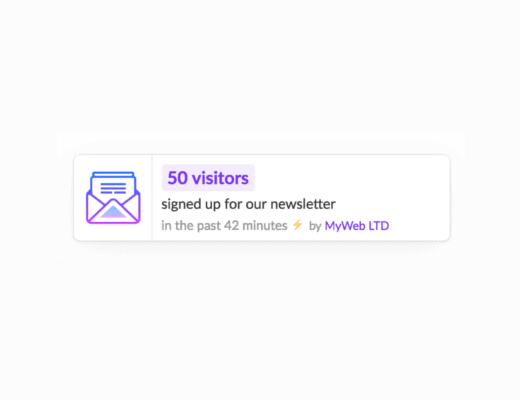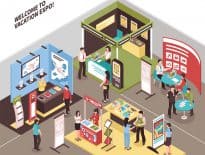Nowadays, customer retention is the key to surviving on the market more than ever. All over the world, poor customer service (which is often associated with high churn rate) costs businesses over $75 billion. What’s more, the customers you lose are likely going over to your competitors, helping them gain a larger piece of the market.
Customer retention isn’t just a way to make sure you’re not losing customers. It’s also about increasing your growth since acquiring a new customer is much more expensive than retaining an existing one – anywhere between 5 up to 25 times more expensive, to be precise.
Fighting customer attrition isn’t always easy, but it’s understandable that many businesses don’t have the time and resources to test various retention methods. That’s why we’ve come up with these 4 helpful tips on how to prevent customer churn.
1. Offer Fast, Multi-Channel Customer Support
Customer service is one of the main factors that impacts customer experience. It’s no secret that poor service will very likely increase your churn, and it’s pretty obvious why.
So then, it’s clear you need to offer great customer service. But how do you do that?
Your customer support team should be available across all possible channels. It’s not enough to just be present on social media to answer support requests, or have people manning the phone. Nowadays, 90% of customers expect consistent interactions on all channels. Also, 62% of people who engage with companies on over 3 channels end up making weekly purchases (just to highlight how important omni-channel support is for retention).
That’s why you should ideally have your customer support department monitor and respond to customer inquiries across the channels where they are the most active.
Next, you need to make sure your customer reps are as efficient as possible. Ideally, you should have a 24/7 support team. That might be expensive, but losing customers because they get frustrated with wait times for a helpful response is even more costly. After all, most clients are pretty impatient – according to HubSpot, an average customer’ patience wears out in 10 minutes – especially during the sales and support lifecycle stages. Also, 90% of consumers say that an immediate response is very important when it comes to customer service questions.
2. Collect Customer Feedback and Detect Common Issues
Feedback is extremely valuable since it tells you exactly how to improve your product or service to meet customer expectations.
That might not sound like much, but consider this – according to data, 78% of consumers actually consider that it’s important for brands to listen to what they have to say, and respond accordingly. An easy way to collect customer feedback is through Net Promoter Score® surveys.
NPS are one-question surveys that ask customers how likely they are, on a scale of 0 to 10, to recommend your brand to others. People who respond in the 0-6 range are called Detractors, customers who give you a 7-8 rating are Passives, and clients who respond with 9 or 10 are called Promoters.
The NPS score is calculated by subtracting the percentage of Detractors from the percentage of Promoters and can range between -100 and 100. Follow-up questions can also be asked to find out what exactly people love and hate about your business, and the improvements they’d like to see.
NPS surveys help you collect relevant feedback from your customers. Even more importantly, they help you pinpoint and fix key customer issues which can contribute to your churn.


NPS makes this task really simple allowing you to look into your customers feedback and identify the most common pain points. These can be further prioritized based on their frequency or overlap with both Passives and Detractors, and afterwards shared with the related departments able to fix the reported problems in a timely manner.
At times the feedback might be quite confusing. Grouping it into categories, that would define the field of intervention, might be helpful.
Also, NPS surveys facilitate tracking customer loyalty. By spotting your brand advocates, and, following up with them, you will be able to turn their feedback into referrals, thus bringing in more business.
3. Track Customer Engagement and Health Score
Keeping a pulse on customer engagement is essential to customer retention because it helps find out which customers are having trouble with your product or service – especially during a free trial. With that information, you can have your customer success team intervene to solve the problem before it starts contributing to your churn rate. Also, it can even help identify great upsell and cross sell opportunities.
What’s more, by tracking engagement, you can find out how customers use your product or service. With that data, you can significantly increase customer retention for future clients by having the product development team focus on improving design and navigation.
How do you track engagement? Well, the standard methods apply – setting up a database, connecting it with other data sources, tracking key events and collecting log data about them, and assigning engagement scores to various customer actions.
Here is where the customer success software come into play.
Customer success software can help track and quantify the customer health score metric (a mix of various customer data like advocacy and NPS, engagement, license utilization, business results, etc.). The software makes it easier for your company to get your clients to achieve their desired outcome. Also, it helps your customer success team better optimize and nurture the relationships in order to prevent churn.
Another great thing about customer success software is that it lets your product development team see what the most requested enhancements are. They’ll have an easier time reviewing and prioritizing tasks this way, ultimately offering customers a better product.
Here are some of the best customer success tools you can use:
4. Rely on value-based content
Email marketing is a key way to keep your customers engaged and encourage repeat purchases. Sources speak of it as driving more conversions than any other marketing channel, including search and social. However, businesses tend to fail at leveraging its personalization and targeting abilities, opting for automated drip campaigns instead.
Meant to build loyalty and encourage brand awareness, emails should be able to entice readers to open and engage, otherwise they are just a waste of time and money. Keeping this in mind, the best e-communications are the ones that underline the value of your product and how it can benefit the customer on the long run.
Whether you provide accountancy services or a help desk software, the principle is simple. Find the value that you bring by means of your offering and put it forward to the customer’s attention. Your contributions to their daily activities is your strength. No promotional email can be more convincing.
Educational content is another type of communication that needs to be explored. Based on the personalized sharing of knowledge, it serves as the perfect occasion to look into specific customer needs, and suggest solutions using your product.
The most efficient email campaigns are tailored to the customer life cycle. All you have to do is identify the touch points and send out highly targeted personalized campaigns. This way, you will make your customers keep your business in mind as a reliable source of knowledge. Choose value-based content over pitching and your efforts will be rewarded with loyalty and trust.
5. Earn Customer Trust and Build Relationships
Modern consumers are bombarded with product options, so one of the best ways to ensure customer loyalty is to make it easy for them to trust your brand.
But how do you earn customer trust as a business?
Well, one thing you can do is to share your product roadmap with your customers. True, that’s usually reserved for stakeholders, but don’t forget – your clients also invested in your business (some more than stakeholders, seeing as how your service might be crucial to their own business’ success).
Of course, keep in mind that you won’t be sharing the exact same roadmap with your customers as the one you share with investors. To avoid any potential issues, remember the following:
- The roadmap shouldn’t contain any specific release dates. After all, things come up and plans change, so don’t commit to a date you can’t be 110% sure about.
- Be transparent and don’t overpromise. Your customers won’t appreciate being lied to. Plus, earning their trust short-term (since you’ll lose it if you can’t keep your promises) is not good for customer retention compared to winning their trust long-term.
Another good way to earn customer trust is to focus on offering top-notch security, and make it clear you do that. According to research, 61% of SaaS buyers noted that their top concern about SaaS and cloud software is the lack of visibility into the security measures that are used.
Here are just a few ideas on how you can alleviate SaaS customer concerns about security:
- Offer relevant compliance depending on your industry (like PCI compliance, for instance);
- Offer GDPR compliance if you have customers from the EU;
- Make sure you can provide reliable DR (Disaster Recovery) and BC (Business Continuity);
- Meet as many security requirements as you can (ideally, all of them) and offer high-end encryption if possible;
- Include SLAs in the contracts your customers sign, and clearly stipulate what credits are applied if you fail to meet the SLAs.
Once you’ve got all that sorted, make sure to highlight all those points on your main landing pages, website pages, and anywhere else you can.
Invest in Customer Retention
What is better than acquiring a new customer? That’s right, retaining an existing one. While most businesses spend their resources on customer acquisition, customer retention can provide faster results, and, on average, costs up to seven times less than customer acquisition.
On a constantly evolving market where the competition gets tougher and customer expectations higher, building and maintaining long lasting customer relationships is a real challenge. Adopting a long term retention strategy is no longer a choice but a necessity. Focus your time and energy on your main asset – your customer base – and turn retention into a competitive advantage to reach sales and revenue goals of your business.






